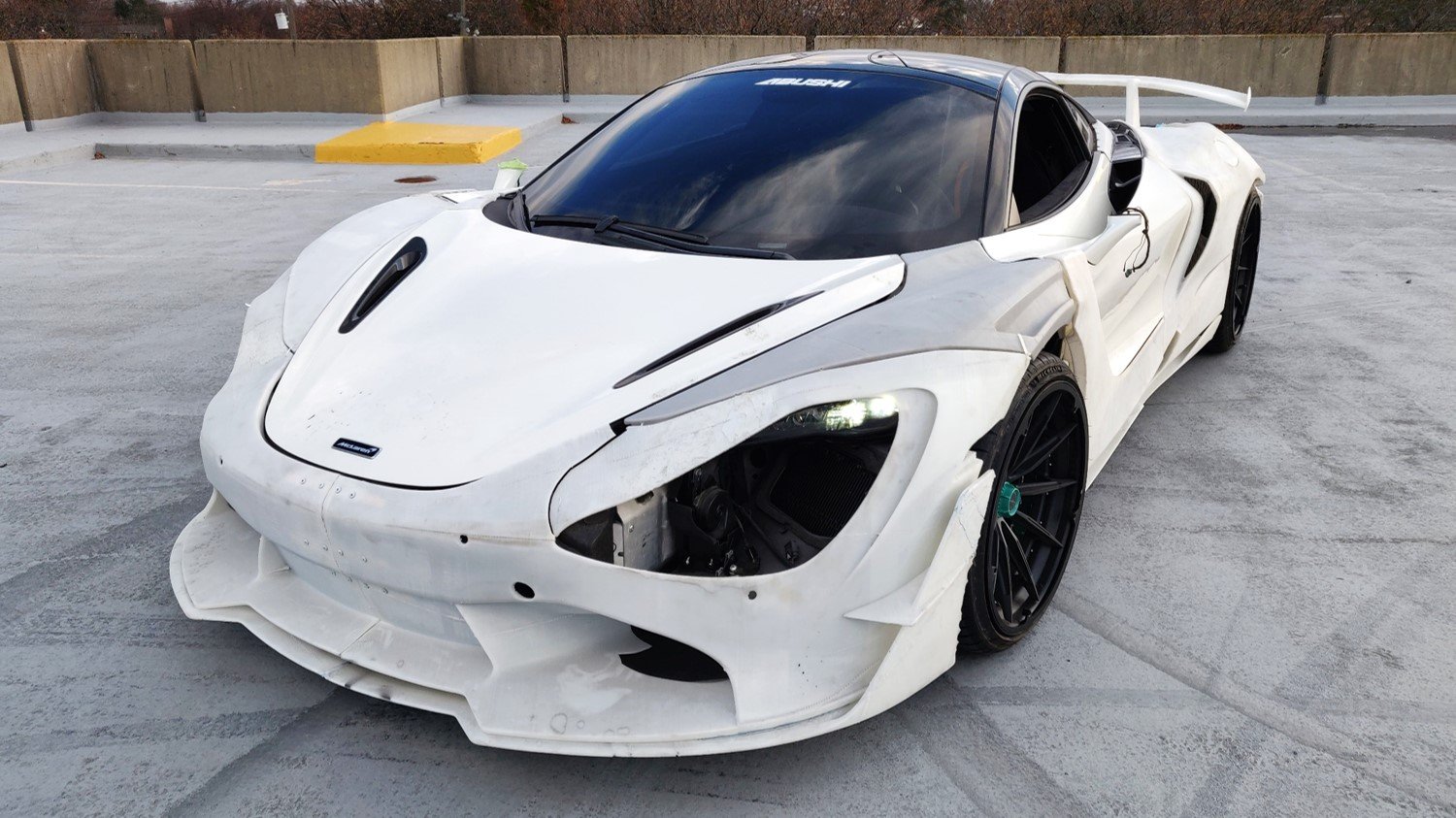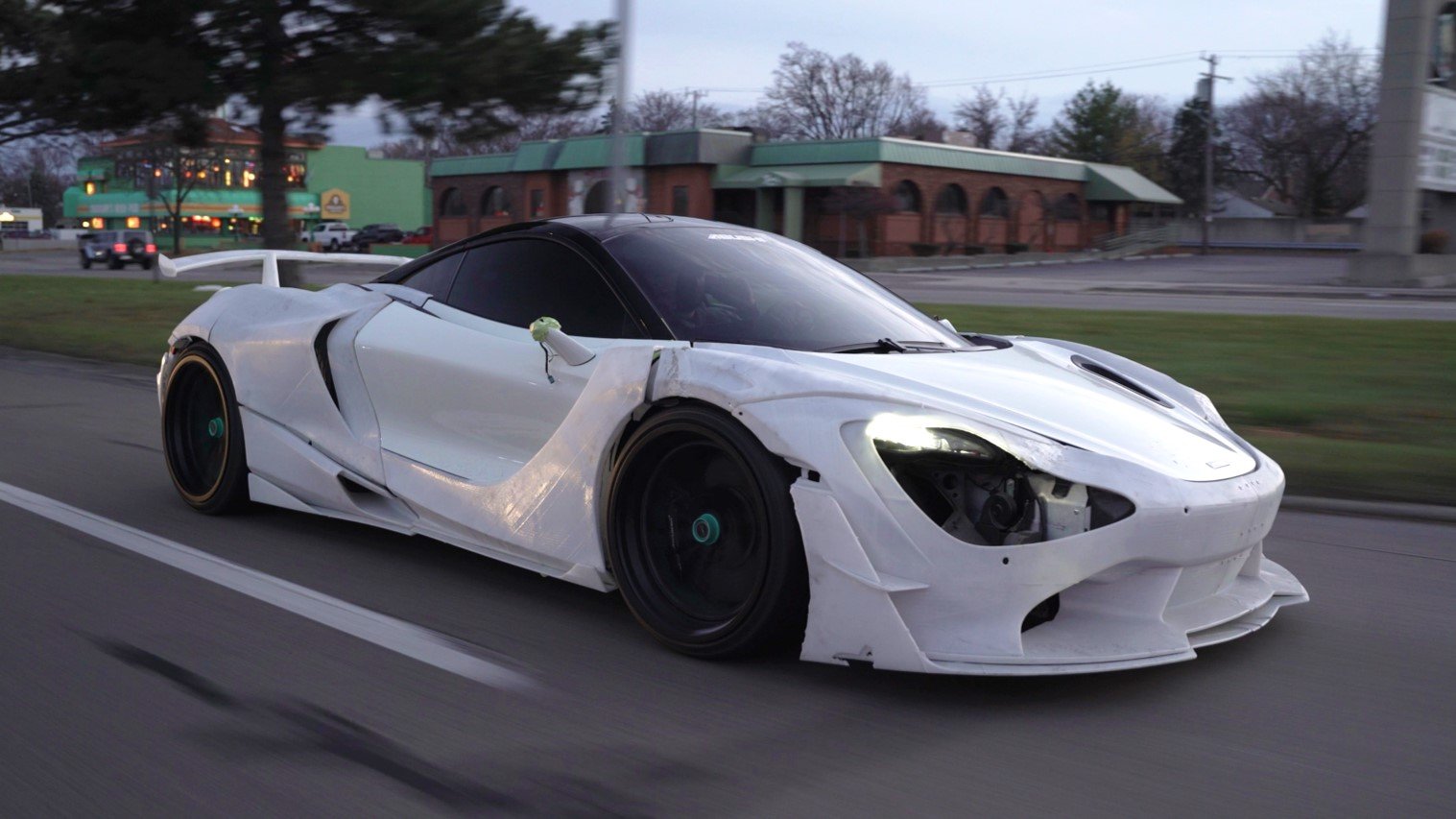1016 Industries is planning to debut its first full-body 3D printed kit at the beginning of 2021. The company plans to provide directly printed tooling molds for the McLaren 720S and other supercars as well in the near future, with the goal to manufacture products directly as 3D printed parts.
As part of 1016 Industries’ quest to be the first in the automotive industry to seamlessly integrate 3D printed technologies into scaled manufacturing processes, last December the company successfully completed the first phase of performance testing for its McLaren 720S with 3D printed parts.
Known for creating some of the world’s most advanced carbon fiber designs made to improve the aesthetic and performance of a wide range of exotic automobiles, the Miami-based company is now committed to showcasing the myriad applications of how 3D printing technology can improve how new automotive parts are produced at a significant scale.
“On this initial test run, we put the car through several different high performance driving scenarios in general conditions, as well as rapid acceleration and deceleration to find out just how much our 3D printed parts could handle,” commented 1016 Industries CEO Peter Northrop. “Our 3D printed 720S designs didn’t produce any serious fractures or cracking during field testing. On this initial run, we were able to take the car up to 80 miles per hour. None of the 1016 Industries 3D printed parts failed or were compromised at all. Everything performed incredibly well.”
Manufacturing on Demand
Initially conceived as an exploration of how to make an array of world-class automotive parts more efficiently, the 1016 Industries 3D McLaren 720S prototype is an exercise in fully utilizing state-of-the-art 3D printing to understand the limits of what the technology can achieve. After 1016 Industries validated all the design criteria using Computational Fluid Dynamics (CFD) for the McLaren prototype, the company put its 3D printed 720S prototype into the field for situational testing, which was conducted in Detroit.
The main goal from the recent drive test was to see just how durable 1016 Industries’ 3D printed 720S parts were. Even more importantly, 1016 Industries is beginning to research the long-term viability of the company’s 3D printed parts integrated into a high-performance exotic vehicle like the McLaren 720S. Data from the introductory test phase is encouraging.
“In theory, 3D printing technology seems like something that could be easily applied to automotive. 1016 Industries came out swinging and thought 3D printing technology was something that we could get right the first time, but the reality is much more complex. Incorporating 3D printing into our production processes has been a steep learning curve,” continued Northrop. “But we were encouraged by how the 720S prototype performed. While the material hasn’t proven yet that it would be the right fit for a long-term prototype, our testing has proven that a car can use 3D printed technologies and be drivable. As to what extent, that is what 1016 Industries is working to find out now.”
* This article is reprinted from 3D Printing Media Network. If you are involved in infringement, please contact us to delete it.
Author: Davide Sher




Leave A Comment